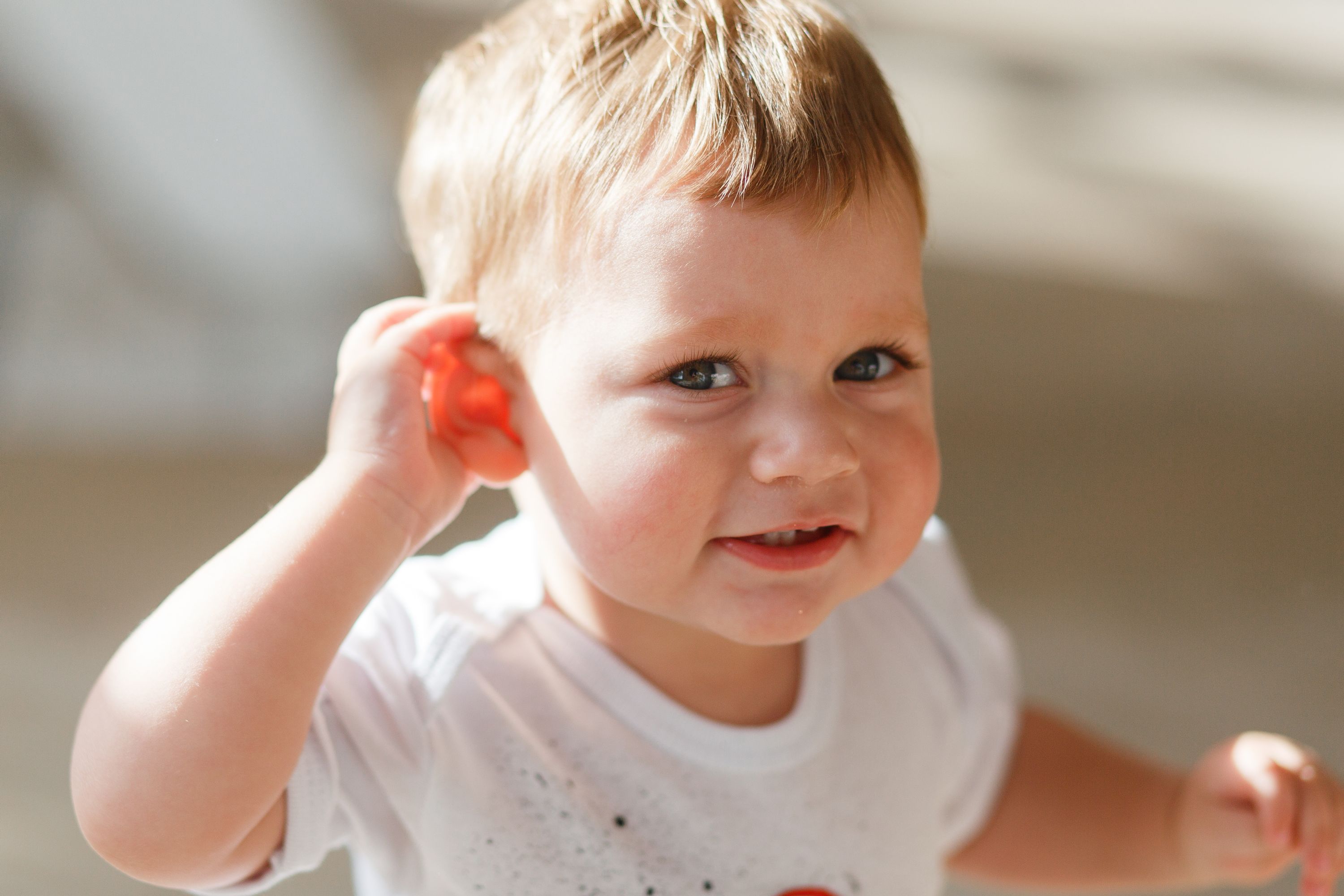Caring for Your Child's Hearing Health
by Lindsay Robinson, HIA Program Coordinator
January 4, 2023
We start to develop language from the moment we are born.1 Our sense of hearing is critical to our brain’s development, especially in the first five years of life. If there is an issue with hearing after birth and no intervention is provided, language, learning, and social skills could be seriously impacted. Hearing loss intervention should start no later than 6 months of age.
 Most newborns have their hearing tested at the hospital before they are brought home. Caregivers can also make note of their baby or toddler’s hearing health as they develop by checking off milestones on the Hearing and Communicative Development Checklist produced by the National Institute on Deafness and Other Communication Disorders (NIDCD). If you think there may be an issue with your baby’s ability to hear, take them to their pediatrician right away so they can receive a physical check. The pediatrician may then refer your child to a hearing professional such as an audiologist for a hearing test.
Most newborns have their hearing tested at the hospital before they are brought home. Caregivers can also make note of their baby or toddler’s hearing health as they develop by checking off milestones on the Hearing and Communicative Development Checklist produced by the National Institute on Deafness and Other Communication Disorders (NIDCD). If you think there may be an issue with your baby’s ability to hear, take them to their pediatrician right away so they can receive a physical check. The pediatrician may then refer your child to a hearing professional such as an audiologist for a hearing test.
Even if you have been told that your baby has normal hearing and your child’s communication is developing appropriately per the NIDCD checklist, it is still crucial to protect your child’s hearing from permanent damage. Unfortunately, 1 in 8 children today have hearing damage from loud noise.2 Noise-induced hearing loss is 100% preventable and the following actions can help:
- The best way to prevent hearing loss is by avoiding loud noises when possible. If you’re raising your voice to be heard over the surrounding noise, it’s likely too loud. You can download apps to check the volume of your environment, such as the NIOSH Sound Level Meter App to ensure your child is not exposed to sounds over 85 decibels (dB).
- If you are going to an event that may be loud, such as fireworks shows, sporting events, concerts, or areas with loud machinery, be sure to equip your child with hearing protection (as well as yourself)! Earplugs are not recommended for babies and young children, but there are earmuffs and noise cancelling headphones that are appropriate for small ears. Make sure it fits snugly on their head and there are no gaps between the seal of the headphone and the child’s head.
- Beware of the volume of entertainment devices. Televisions and personal audio devices should not be blaring, and your child should also take frequent breaks from these devices to allow their ears to “rest”. Many hearing professionals recommend the 60/60 rule: listening to audio at no more than 60% of its volume level for no more than 60 minutes at a time.3
Be sure to speak with your child’s pediatrician or contact a nearby audiologist if you have any questions about your child’s hearing health and ways to prevent hearing loss. Continue making memories in the new year with happy and healthy hearing!
1 Atresia Microtia Repair Surgery: The International Center for atresia microtia repair: Ear surgery: Ear reconstruction. International Center for Atresia Microtia Repair Surgery at the California Ear Institute in Portola Valley California USA. (n.d.). https://www.atresiarepair.com/normal-auditory-development.html#:~:text=Ear%20canal%20development%20starts%202,confirm%20normal%20inner%20ear%20function.
2 Centers for Disease Control and Prevention. (2018, April 13). Listen up! protect your child's hearing. Centers for Disease Control and Prevention. https://www.cdc.gov/nceh/hearing_loss/toolkit/listen_up.html
3 Group, H. C. (2022, June 24). What is the 60-60 rule? Hearing Health Associates. https://www.hearinghealthassoc.com/hearing-health-associates-va-blog/what-is-the-60-60-rule
 Most newborns have their hearing tested at the hospital before they are brought home. Caregivers can also make note of their baby or toddler’s hearing health as they develop by checking off milestones on the Hearing and Communicative Development Checklist produced by the National Institute on Deafness and Other Communication Disorders (NIDCD). If you think there may be an issue with your baby’s ability to hear, take them to their pediatrician right away so they can receive a physical check. The pediatrician may then refer your child to a hearing professional such as an audiologist for a hearing test.
Most newborns have their hearing tested at the hospital before they are brought home. Caregivers can also make note of their baby or toddler’s hearing health as they develop by checking off milestones on the Hearing and Communicative Development Checklist produced by the National Institute on Deafness and Other Communication Disorders (NIDCD). If you think there may be an issue with your baby’s ability to hear, take them to their pediatrician right away so they can receive a physical check. The pediatrician may then refer your child to a hearing professional such as an audiologist for a hearing test.